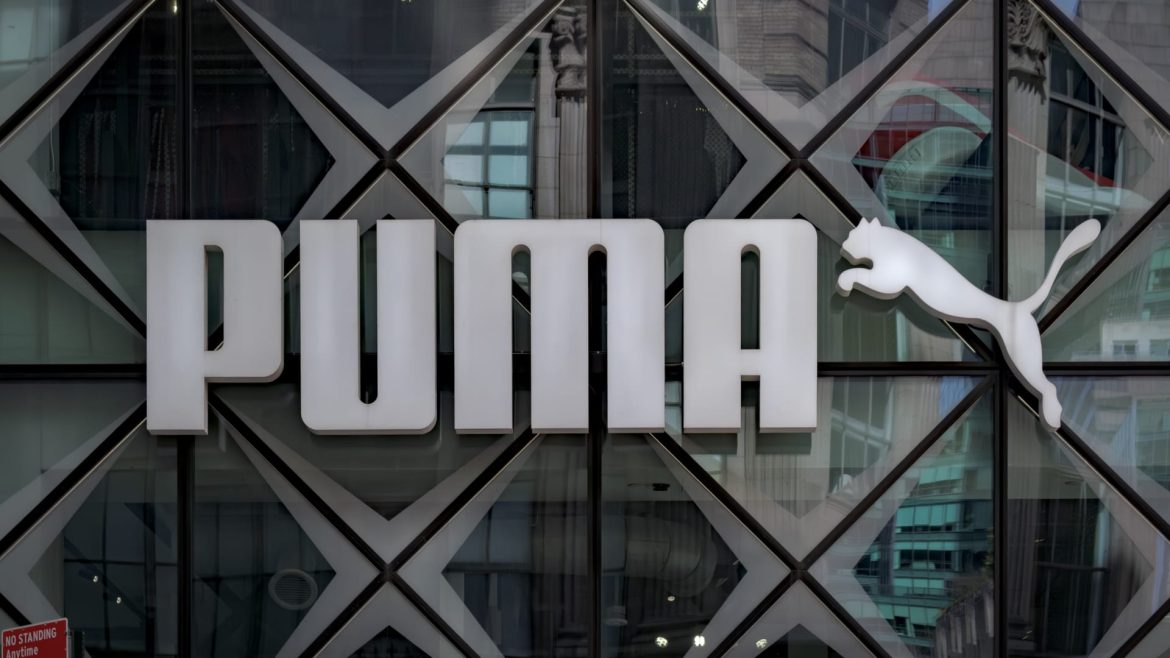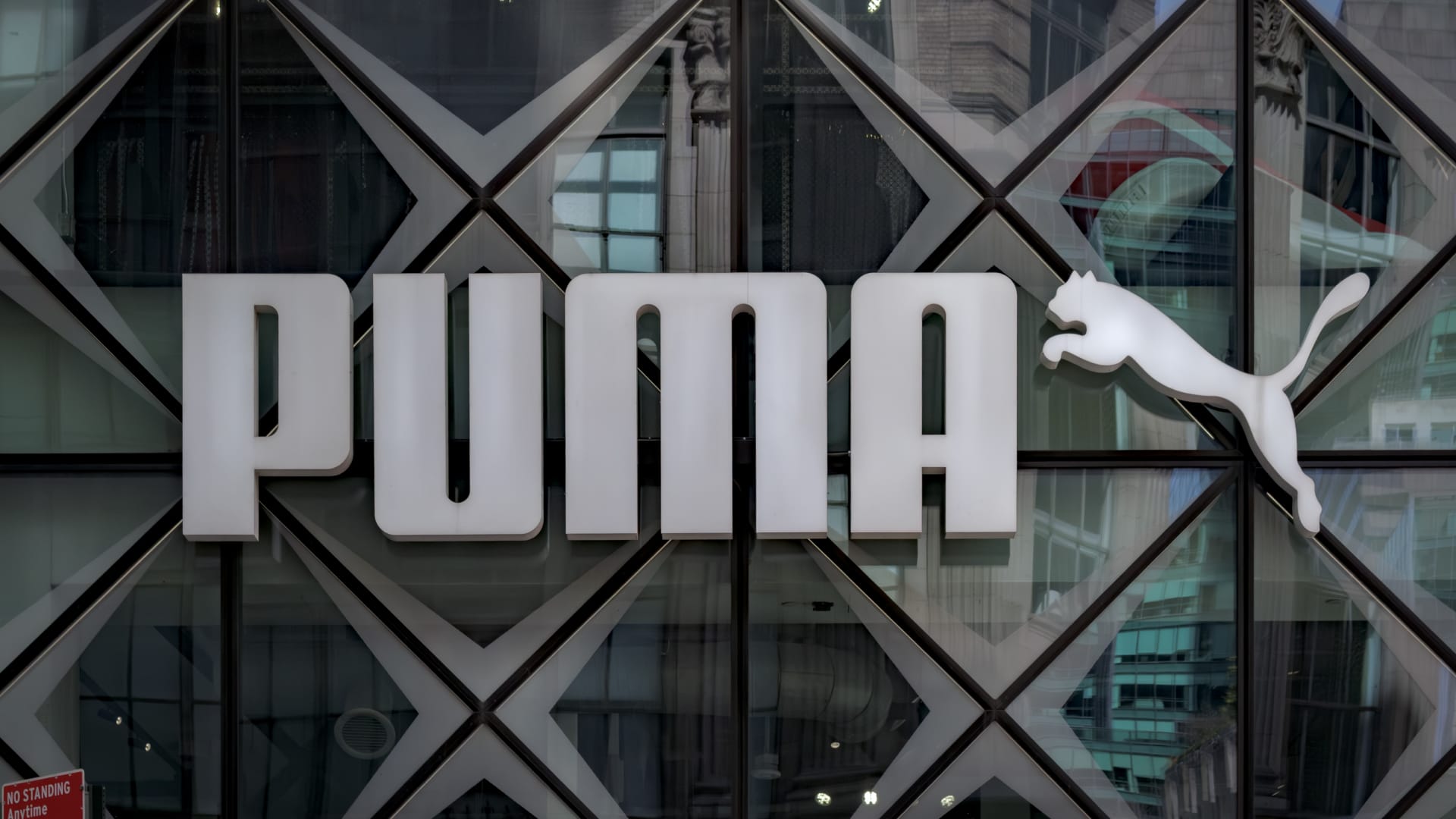The Complexities Behind Puma’s Recent Downturn
The sportswear industry has long been a battleground for brands vying for consumer attention and market dominance. Among the contenders, Puma has established itself as a formidable player, known for its innovative designs and strategic collaborations. However, recent events have cast a shadow over the company’s prospects, with its shares experiencing a dramatic 18% plunge. This downturn is not merely a fleeting market correction but a symptom of deeper, systemic challenges that warrant a comprehensive examination.
The Financial Wake-Up Call
The immediate trigger for Puma’s stock decline was the release of its fourth-quarter results, which failed to meet analyst expectations. While sales growth remained positive at 9.8%, it fell short of the anticipated 12%. More concerning was the decrease in annual profit, which dropped from €305 million in the previous year to €282 million in 2024. This underperformance raised eyebrows and sparked concerns about Puma’s ability to maintain its competitive edge. The situation worsened when the company revised its full-year outlook for 2025, projecting a loss instead of the previously expected profit. This revision sent shockwaves through the investment community, leading to a wave of sell-offs and a significant drop in share price.
A Shifting Market Landscape
Puma’s struggles are not occurring in isolation. The sportswear industry is undergoing a transformation, driven by evolving consumer preferences and intensified competition. The rise of athleisure wear has blurred the lines between sportswear and casual fashion, creating new challenges for traditional brands. Additionally, the emergence of niche brands has fragmented the market, making it more difficult for established players like Puma to maintain their market share. Global economic slowdowns and inflationary pressures have further complicated the landscape, leading to more cautious consumer spending. These broader trends are exerting downward pressure on Puma’s performance and contributing to the negative sentiment surrounding the stock.
The Tariff Conundrum
One of the most significant challenges facing Puma is the impact of tariffs, particularly those imposed by the United States. The company has estimated that US tariffs will reduce its 2025 gross profit by €80 million. This represents a substantial economic burden that directly impacts Puma’s profitability and its ability to compete effectively in the crucial US market. Tariffs not only increase the cost of goods sold but also create uncertainty and complexity in supply chain management. This uncertainty makes it more difficult for Puma to plan its production and distribution strategies, potentially leading to further inefficiencies and reduced profitability. The tariff issue highlights the vulnerability of global businesses to geopolitical tensions and trade disputes.
The Battle for Market Share
Puma operates in a highly competitive market dominated by industry giants Adidas and Nike. These two behemoths possess significant advantages in terms of brand recognition, marketing resources, and economies of scale. Puma’s recent underperformance has amplified concerns about its ability to effectively compete against these larger rivals. While Puma has carved out a niche for itself with its focus on fashion-forward designs and collaborations with celebrities and influencers, it still faces an uphill battle in terms of overall market share and brand dominance. The pressure to keep up with Adidas’ and Nike’s innovation and marketing strategies requires significant investment, further straining Puma’s resources.
Internal Turbulence and Strategic Shifts
Beyond the external pressures, Puma also faces internal challenges that contribute to its current difficulties. The recent change in leadership, with Arthur Hoeld taking charge as the new CEO, introduces a period of transition and potential uncertainty. New leadership often brings new strategies and priorities, which can take time to implement and yield results. Furthermore, there may be internal restructuring or operational adjustments that disrupt the company’s momentum in the short term. It is crucial for Puma to effectively navigate this transition and ensure that its strategic direction remains aligned with market demands and competitive realities.
Strategic Missteps and Missed Opportunities
A critical examination of Puma’s recent performance suggests potential strategic missteps or missed opportunities that have contributed to the downturn. These could include:
Inventory Management: Overstocking or inefficient inventory management can lead to markdowns and reduced profitability.
Marketing Effectiveness: A failure to effectively target key demographics or capitalize on emerging trends can result in lost sales and market share.
Innovation Lag: Falling behind in product innovation or failing to anticipate changing consumer preferences can erode brand appeal and competitiveness.
Supply Chain Vulnerabilities: Over-reliance on specific suppliers or regions can expose the company to disruptions and increased costs.
Addressing these internal challenges and rectifying any strategic missteps is crucial for Puma to regain its footing and restore investor confidence.
Charting a Path Forward
Despite the current challenges, it is important to recognize that Puma possesses a strong brand heritage, a global presence, and a track record of innovation. The company has the potential to recover from this downturn and achieve future growth, but it will require decisive action and a well-executed turnaround strategy. This strategy should focus on:
Aggressive Cost Management: Implementing measures to reduce operating expenses and improve efficiency.
Strategic Investments: Prioritizing investments in product innovation, marketing, and supply chain optimization.
Market Diversification: Expanding into new markets and diversifying its product offerings to reduce reliance on specific regions or categories.
Brand Reinvention: Refreshing the brand image and strengthening its connection with target audiences.
Tariff Mitigation: Exploring strategies to mitigate the impact of tariffs, such as diversifying sourcing locations or negotiating trade agreements.
By taking these steps, Puma can position itself for a return to profitability and sustainable growth.
Conclusion: A Test of Resilience
Puma’s recent struggles represent a complex interplay of external pressures and internal challenges. While the immediate cause was disappointing financial results, the underlying factors include sector-wide headwinds, the impact of tariffs, intensified competition, and internal transitions. Overcoming these challenges will require a comprehensive turnaround strategy that addresses cost management, strategic investments, market diversification, brand reinvention, and tariff mitigation. The path ahead will undoubtedly be challenging, but Puma’s strong brand heritage and global presence provide a solid foundation for recovery. Whether Puma can successfully navigate this storm and rebound stronger remains to be seen, but the company’s response in the coming months will be crucial in determining its long-term future. The plunge serves as a stark reminder that even established brands must remain vigilant, adaptable, and innovative to thrive in an ever-changing global market. The game is far from over; Puma now needs to lace up its boots and demonstrate its resilience on the field.





